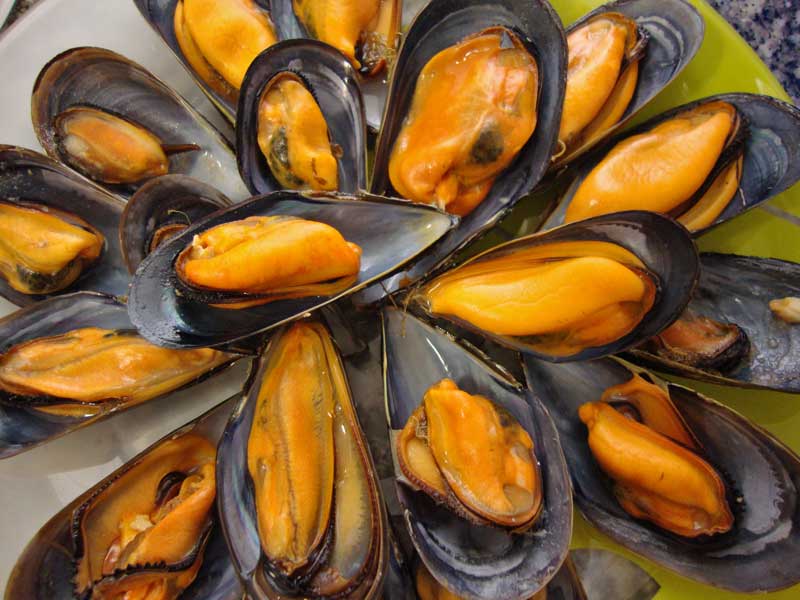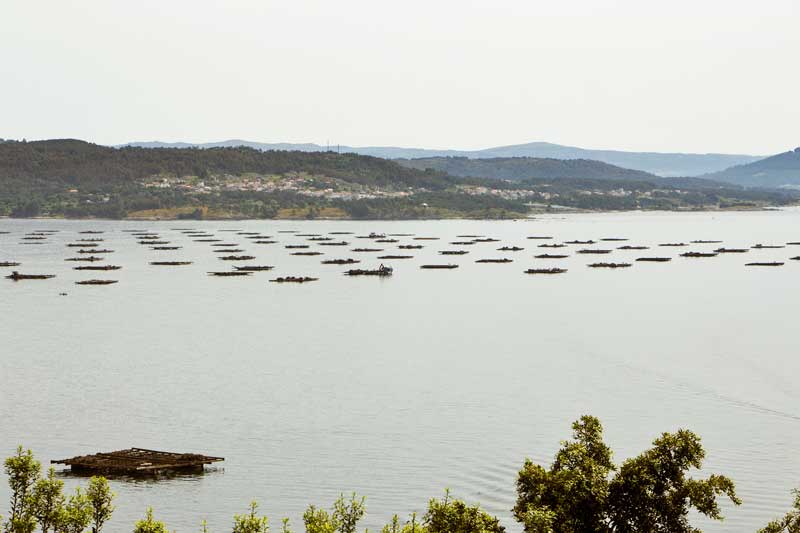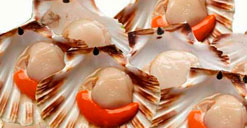
rom the platforms hang umbilical cords which give life to various species of molluscs. This greatly increases their reproduction.
The great wealth of the waters and the beneficial environmental conditions in the Galician bays boost the growth rate and the quality of the mussel. Galician mussels are grown and harvested from floating platforms in sheltered parts of the bays of Vigo, Pontevedra, Arousa, Muros-Noia and Ares-Betanzos.

In our bay there are around 118 mussel platforms in three different groups. The harvesting season for mussels depends, among other things, on their destination. If they are to be canned or processed, they are usually harvested in the summer. Those intended for direct consumption are best collected during the autumn and winter. The Galician mussel reaches commercial size (70-95 mm) in approximately 17 months, while in other producing countries growth is much slower: mussels in the rest of Europe need 2 to 6 times as long to reach this size.

The traditional mollusc-farming system in Galicia is the platform or "batea", a native design which gives the highest known productivity and has made Galicia the European leader. The batea is a floating nursery consisting of floats and a eucalyptus lattice of roughly rectangular shape, from which mussel ropes hang.
As well as mussels, scallops and oysters are grown on the bateas. Galicia produces annually two types of oyster: flat or European, and Pacific, a species registered by Galician producers under the name “curly oyster”. The season for wild oysters comprises the months of December, January and February; farmed oysters are available all year.

The scallop is Galicia’s most characteristic shellfish, not only for its high culinary value but also because of its relationship with the Way of St James: it is the pilgrims’ symbol, accompanying them along the route until their arrival at the Apostle’s Tomb. The farmed scallop presents an extra challenge: since they don’t naturally attach themselves to the ropes like oysters or mussels, each one must be tied on manually. Wild scallops which live on the sea floor are taken from launches with a special rig called a rake or harrow.